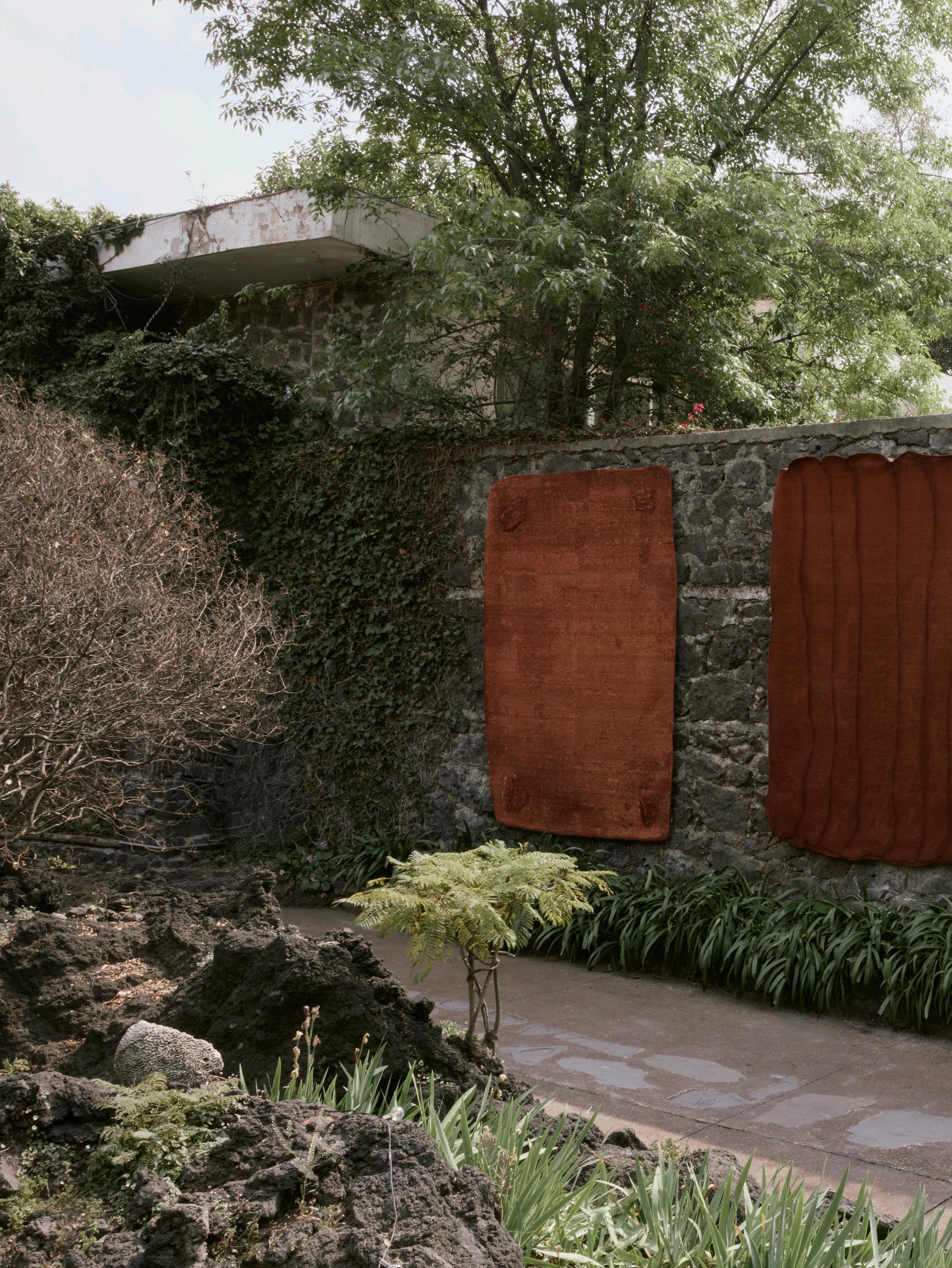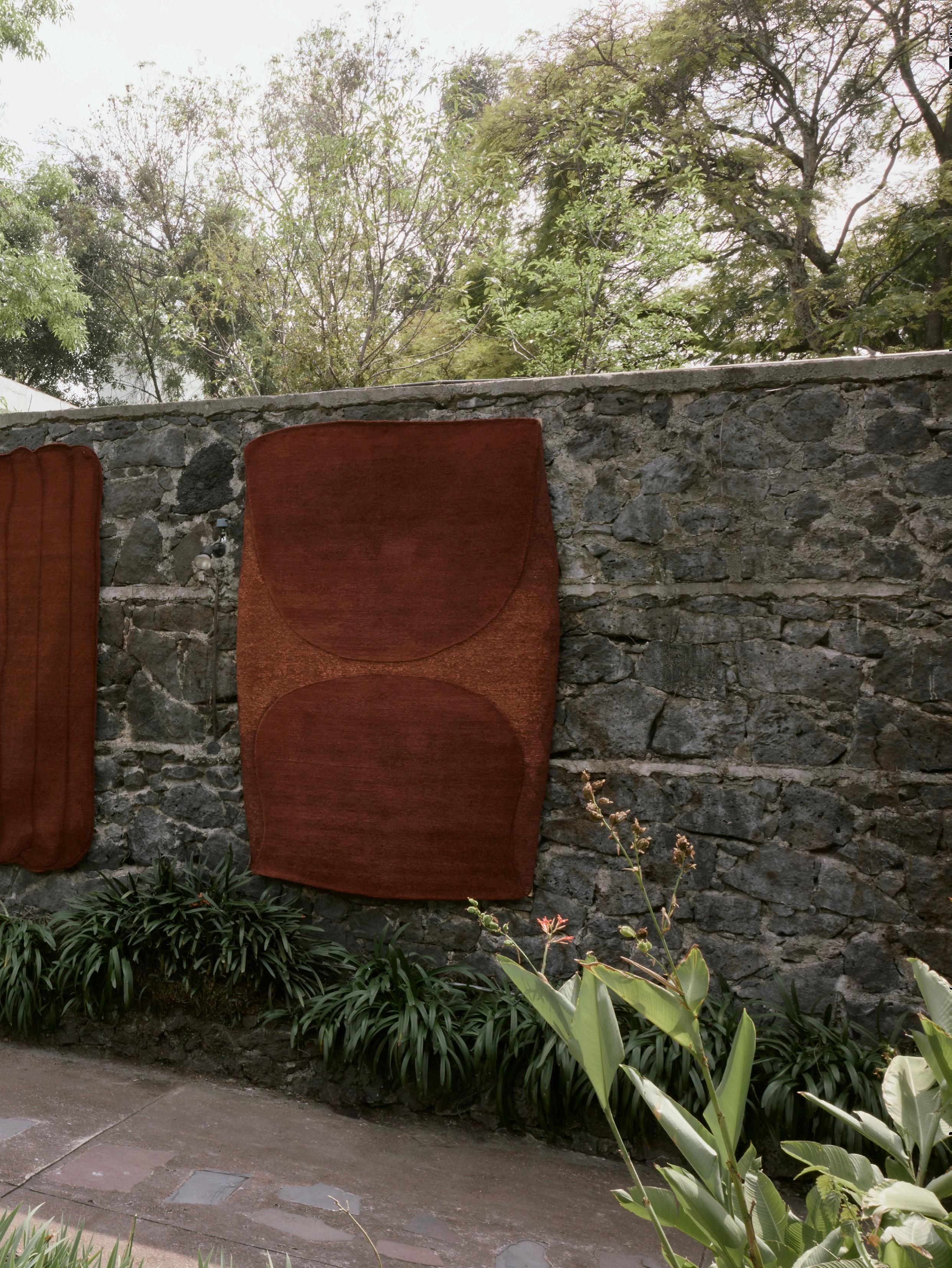
6 minute read
Design Voices: Eny Lee Parker
PHOTOGRAPHY Alejandro Ramírez Orozco INTERVIEW Sophie Lewis
CLAY SHAPES
Known for her hand-sculpted clay furniture and lighting, Brooklyn-based designer Eny Lee Parker collaborated with contemporary Milan rug company cc-tapis to explore the material in a new light.
The ensuing Clay Scan collection articulates the tactile nature of clay through a series of handwoven rugs, debuting at Mexico Art Week in Casa-Estudio Max Cetto before Milan Design Week 2025.

Congratulations on your Clay Scan collection. Can you share how your collaboration with cc-tapis first started and what the early beginnings of the project looked like?
Eny Lee: Thank you. It actually all started quite casually—cc-tapis reached out to me via Instagram, which was such a nice surprise. I’ve admired their work for a long time, so getting that message felt really exciting. Once we connected and started talking, the process progressed more quickly than I expected. I’m used to a lot of back and forth with design development, but with them, the concept came together quite naturally.
The idea for Clay Scan had been sitting with me for a while. I wanted to translate the tactile, imperfect qualities of hand-sculpted clay into something textile-based. So I created physical compositions using clay—pressing, slicing, and shaping by hand—and then had those forms 3D-scanned to preserve their natural irregularities. From there, I developed three distinct patterns. One is more minimal, almost monolithic, with a strong corner detail. Another is divided horizontally—a kind of horizon line—and the third is a looser composition made up of small clay gestures that feel almost like a language or rhythm.
We explored two earthy colourways, both drawing from natural clay pigments, and experimented with different weaving techniques to give each section its own texture—some areas are more raised or cut, others looped—to mimic the depth and tactility of the original sculptures. It was important to me that they didn’t feel too flat or graphic—they had to retain that sense of hand and materiality.
Clay is central to your practice, and you've now translated its qualities into textile design. How does each rug capture the transformative nature of clay?
Eny Lee: That’s really the heart of the project. When I was working with the clay, I rolled out long, flat sheets and began folding the ends, which created these natural variations in depth and surface texture. When we scanned the compositions, those subtle shifts were captured: raised areas, softer folds, even the imprint of the wood board I was working on. You can see it in the rugs—the grain of the wood, the way the clay darkens where it folds or overlaps—it’s all there, but it’s incredibly subtle.


I gravitate towards shapes that feel like parts of the body, not in a literal way, but more in how the skin curves, folds, and stretches.
– Eny Lee Parker
Your appreciation for handcrafted and natural materials aligns with cc-tapis’ approach to hand-knotted and handwoven rugs. How do your shared design values come through in this collection?
Eny Lee: What I really connect with cc-tapis on is their ability to bring a playful spirit into design—they don’t take themselves too seriously, and there’s a real joy in that. Their work is contemporary, but there’s always this organic, artistic language that feels intuitive and expressive. I love that they collaborate with a range of incredible artists and designers while still allowing each piece to retain that hand-crafted, almost sculptural quality.
With Clay Scan, those shared values really came through. cc-tapis has this amazing ability to translate very tactile, physical ideas into textiles. They’re incredibly dynamic in what they can create, and that opens up so many creative possibilities—it’s inspiring as a designer to work with a partner like that.
Beyond material translation, Clay Scan shares the soft, organic language of your furniture and lighting. Why is it essential for your work to embrace comforting, animalistic forms and evoke warmth?
Eny Lee: I gravitate towards shapes that feel like parts of the body, not in a literal way, but more in how the skin curves, folds, and stretches. There’s something very instinctive and comforting about those imperfect forms. You can see that in a lot of my work—in ceramics, we hand-build everything, so the surfaces are never completely smooth. There are dimples, edges, little scratches—all these textural moments that come from the hand and the process itself.
It’s important to me to preserve that intimacy. I love that hand-building carries the imprint of the maker—it feels personal, almost emotional.

The rugs debuted at Mexico Art Week, photographed in the historic Casa-Estudio Max Cetto and curated by Studio 84. What made this setting the ideal backdrop to launching the collection?
Eny Lee: cc-tapis chose the location—Casa-Estudio Max Cetto—which was the perfect space, as the rugs felt at home with the natural elements and colours, particularly the limestone ceiling.
There’s this beautiful tension in the house between modernist rigour and volcanic materiality. The Clay Scan pieces are very much about process—the scanning of hand-sculpted clay forms, the textures, the subtle imperfections—and Max Cetto’s home, with its stone walls and exposed concrete, felt like it was in dialogue with those ideas.
Each rug in the collection plays with organic shapes and tonal shifts, almost like geological layers. Placing them on volcanic stone floors, next to classic Mexican modernist furniture, gave the work context and weight. The Terracotta Arc rug, for example, has these soft edges and warm earth tones that picked up on the patina of the space. Studio 84 did a fantastic job curating it all in a way that was quiet but deeply considered. It felt less like a launch and more like a conversation between place, process, and material.
How did the experience differ from designing and producing your own rug collection?
Eny Lee: Working with cc-tapis was definitely a different level—their rugs are almost like art pieces, they’re collectable. There's such a high level of craftsmanship and artistry involved. With pieces like these, it sometimes takes people a little time to fully understand or get comfortable with them because they’re not just functional.
I enjoy doing both when I can: pushing boundaries with more playful, sculptural designs that challenge people a little, while also creating pieces that feel familiar and relatable. Having that balance is important to me—it keeps the work both exciting and approachable.
How did you hope people would interact with and experience the rugs during Milan Design Week?
Eny Lee: I hope people took the time to get close to them—to experience the materiality, the texture, the subtle shifts in colour. Up close, you can appreciate how the natural dyes create layers of tone and how the shading plays across the surface. Even though each rug is technically a single colourway, there are nuanced variations when you look closely.

